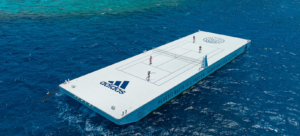
New drop in IOF carbon emissions
The International Orienteering Federation has released its Carbon Budget Report for 2021, which estimates the CO2 emissions of the federation in the past year. […]


How green are Premier League clubs & what are they doing to help?
Homes for bats, on-site allotments and recycled kits are just some of the ways Premier League clubs are continuing to improve their ‘green’ credentials. […]


Biathletes worry about impact of climate change
Biathletes are concerned about the sustainability of their sport: In the Athlete Sustainability Survey 2021, nearly 90% feel that biathlon has already been impacted […]


Beijing 2022 Winter Olympics debut climate-friendly C02 cooling system
BEIJING: For the first time in the history of the Olympic Games, and in China, the Olympic and Paralympic Games Beijing 2022 will use […]

The IFF joins the Race to Zero network
The IFF has sustainability rooted in its strategy and as part of the environmental effort has, following the example of many other UN Sports […]


“Inclusion 23”: sustainability program for Special Olympics 2023
The Special Olympics World Games 2023, where people with intellectual and multiple disabilities compete in Berlin, should help the German capital achieve long-term inclusive […]



World Rugby launches ambitious plan to support global action on climate change
World Rugby has today launched its Environmental Sustainability Plan 2030, a detailed strategy to help tackle the environmental sustainability issues that both affect and […]


Formula E And Mobily Announce Partnership With The Diriyah E- Prix In Support Of Sustainability In Sports
RIYADH, Saudi Arabia – Formula E and Etihad Etisalat Co (Mobily) have today announced a new partnership with the Diriyah E-Prix races of the ABB […]


THE FLOATING TENNIS COURT AIMS TO RAISE AWARENESS ABOUT PLASTIC ENTERING THE OCEANS On the occasion of the australian open, adidas and parley for the oceans have set […]



Beijing 2022 Pre-Games Sustainability Report outlines climate solutions, development of winter sports and regional regeneration in China
Beijing 2022 released its Pre-Games Sustainability Report today, detailing the measures implemented to reduce and compensate carbon emissions, protect local ecosystems and create long-term […]
